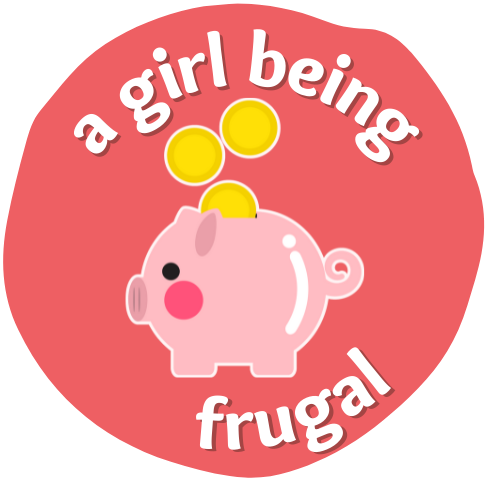Are you tired of living paycheck to paycheck? Do you struggle to keep track of your spending and savings goals? If you answered yes, then the piggy bank budgeting method may be just what you need to get your finances in order.
[fluentform id=”2″]
I will explain how this simple yet effective method works and how you can use it today. So grab your favorite coffee mug and settle in because financial freedom is just a few piggy banks away!
What is the Piggy Bank Method of budget?
The piggy bank method of budgeting is a fun and easy way to take control of your finances. It involves allotting your money into different categories, then breaking each category down further by putting it in individual “piggy banks” or envelopes. This helps you to keep track of your spending and savings goals easily.
You might enjoy these posts:
The Three Pots of Money: Savings, Spending, and Charity
One of the keys to successful piggy banking is dividing your income into three categories or “pots” of money: savings, spending, and charity.
- The savings pot should be used to build an emergency fund and work towards long-term goals like retirement or a down payment for a home.
- The spending pot is for daily expenses like groceries, rent, and bills.
- The charity pot is for giving back to others and supporting causes that are important to you.
You can easily track your expenses and prioritize your financial goals by setting up automatic bank transfers and allocating your income based on these pots.
This method can help you save money, control your spending, and positively impact your community.
Understanding the Piggy Bank Budgeting Method
Understanding the piggy bank budgeting method is an effective way to take control of your finances. As mentioned in the previous sections, piggy banking involves dividing your money into different accounts or “pots” for different purposes, such as savings, spending, and charity.
This method simplifies budgeting by making it easier to track where your money is going and ensuring that you prioritize your spending.
It can also be used to manage bills and debts and plan for early retirement. By teaching kids budgeting basics through piggy banking, they can develop important skills such as impulse control and patience. Putting loose change into a piggy bank is also a simple way to start saving money.
Overall, understanding the piggy bank budgeting method is valuable for anyone looking to improve their financial situation.
How Piggy Banking Simplifies Budgeting
The piggy bank method of budgeting is a popular and effective way to manage your finances. Dividing your money into separate pots for savings, spending, and charity simplifies the budgeting process and helps you keep track of your finances.
This method is especially useful for sinking funds, where you can use piggy banks to set aside money for bills and savings. It’s also a great way to manage debt repayment and plan for early retirement.
The piggy bank budgeting system can even be used to teach children about budgeting basics. You can start small and gradually build up your savings by putting loose change into a piggy bank.
All in all, the piggy bank method provides an easy and practical way to prioritize your expenses and manage your money effectively.
Sinking Funds: Using Piggy Banks for Bills and Savings
One of the key benefits of piggy banking is the ability to create sinking funds for non-monthly expenses that you know are going to occur in the future. A sinking fund is exactly what it sounds like – a sum of money that you set aside over time for a specific purpose, such as payment for annual car insurance, taxes, or travel expenses.
Using separate piggy banks, you can easily allocate a portion of your monthly income toward these anticipated expenses. This method can help relieve stress and avoid financial strain when paying for those non-monthly bills.
Plus, as with other piggy banking sub-methods, it can streamline your overall budgeting approach, making it simpler to manage your money and meet your goals.
Piggy Banking for Debt Repayment and Early Retirement Planning
Another helpful way to use the piggy banking method is for debt repayment and early retirement planning. By separating funds into different pots, you can allocate a portion of your budget specifically for debt repayment, whether that be student loans, credit cards, or other debts.
Additionally, you can prioritize savings for retirement by setting aside a portion of your income into a separate pot reserved for retirement contributions.
This method can help you stay on track with debt repayment and save for retirement, all while staying within your budget.
It’s important to remember that every bit of savings helps, and by taking small steps toward your financial goals, you can make big progress over time.
Piggy Bank System for Kids: Teaching Budgeting Basics
The Piggy Bank System is an excellent way to teach children the basics of budgeting. By separating money into three pots savings, spending, and charity, children can learn the importance of prioritizing their expenses.
Parents can set up an allowance system for their children every week and encourage them to put their money into different jars, effectively learning how to manage their finances from a young age.
Hearing the coins jingle and seeing how much money goes into each jar can be an educational experience for kids. This piggy bank method is a great first step towards building essential financial skills that will benefit them in the long run.
Putting Loose Change into a Piggy Bank: A Small-Scale Version of Saving
A piggy bank is not only for kids; it can also be a helpful tool for adults who want to save their loose change. Putting loose change into a piggy bank may seem like a small-scale version of saving, but it can actually make a big difference in building your savings.
By dropping in coins on a daily basis, you are putting money aside that you might not have noticed otherwise. Over time, the little bits add up and can result in significant savings.
Plus, using a piggy bank is a fun and easy way to create a habit of saving.
Whether you are saving loose change or putting in larger amounts, the piggy bank method can be a great way to build your savings without noticing a big sacrifice to your spending habits.
Your Piggy Bank Accounts
When it comes to budgeting with the piggy bank method, it’s important to prioritize your accounts. This means covering necessities first, such as bills and expenses for housing, transportation, and food.
Once these are taken care of, you can allocate money towards your other pots, such as savings or charity. By prioritizing necessities, you ensure that your essential expenses are covered before you spend money on anything else.
This can also alleviate financial stress and help you build a solid foundation for your budgeting strategy. The piggy bank method is about finding what works for you and your financial goals.
Lessons Learned and Tips for Successful Piggy Banking
The piggy banking method of budgeting can effectively manage finances for adults or children. Through different pots of money, such as savings, spending, and charity, individuals can prioritize their expenses and avoid overspending.
Sinking funds can also be created for bills and larger expenses, while the envelope budgeting method can categorize every dollar. It’s important to cover necessities first and to make sure all expenses and savings goals are included in the budget.
By using piggy banks, individuals can simplify their budgeting process and gain better control of their finances.
Teaching children about piggy banking can also instill good financial habits at a young age.
Overall, a little bit of organization and patience can go a long way in creating successful piggy banking habits.




